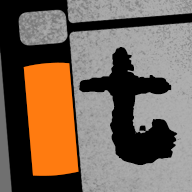Audio is an odd thing as you can't "Show" what the difference look like in real time as you would with video/images. Much of learning to process audio comes from playing with the tools. Visualizing the effects on sound is a difficult thing, for me it's exactly like looking at a frequency graph, time flows left to right, frequency top to bottom, and amplitude (volume) of each frequency is the brightness of the beast.
When a specific sound is the loudest in a specific frequency, it overwhelms all of the other sounds at that specific frequency. Sculpting a soundscape is like drawing a mountain range within this visualization. You choose where to put the mountains in the landscape.
The effects can sculpt the individual sounds by altering the volumes, frequencies and shifting their times. Playing with the effects and pushing them to their extremes to see what specifically they do will help you get more of a handle on the individual options.
Using an EQ to trim sounds that will clutter the soundscape
Using a Low/High cut/pass filter pair will allow you to define the limits of a sound to remove the clutter above and below and help isolate it.
Using a limiter to "softly" keep sounds from "clipping" will allow you to push sounds slightly louder after applying the filter to bring it the quiter bits of it closer to the top than otherwise would be possible.
A compressor will do the opposite of the limiter by bringing up the quiet parts in a controllable way.
Most of the work, however, includes understanding how sound itself and the mechanics of capturing the sound works as a principal of physics (stay with me)... Sounds that start hard can be cut very close to the initial sound to edit it together with another sound. Thinking about sounds as isolated clips, not full dialogs allows you to put sounds on a timeline and create whole new sonic expressions.
Dialog, in the same manner can be altered if looked at as unvoiced, soft voiced and hard voiced. Any "Unvoiced" sound is a sound that doesn't engage the vocal chords when produced - many of the hard consonants work this way and can be replaced from one clip to another willy nilly. Vowels tend to be voiced and will change over time based on the specific sound they are coming from and going to, so they can only be stolen from words that are phonetically similar...
Consonants and vowels are not quite enough to look at though as these can be further broken down into individual "Phonemes" which can be replaced from other clips if necessary. It's time consuming, but possible to fix sound capture problems (clicks, pops, clipping, bad digital capture, etc. ).
http://en.wikipedia.org/wiki/Phonetic_transcription uses these concepts to write specific sounds rather than just words. Editing dialog can be viewed the same way.
http://www.dplay.com/book/ has a list of great resources... the first book on the list has sections on all of these concepts and is a great resource.




 (I know the quote is older than that, but he definitely appended the "It's a stupid thing to want to do". I first heard it attributed to John Cage, and if you know anything about him, he wouldn't consider that a stupid thing to do at all. Also, insert lame Einsturzende Neubauten joke here).
(I know the quote is older than that, but he definitely appended the "It's a stupid thing to want to do". I first heard it attributed to John Cage, and if you know anything about him, he wouldn't consider that a stupid thing to do at all. Also, insert lame Einsturzende Neubauten joke here).